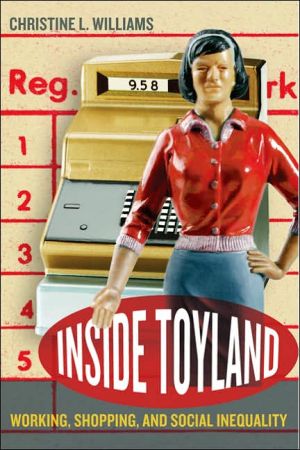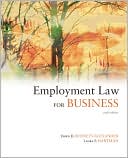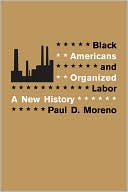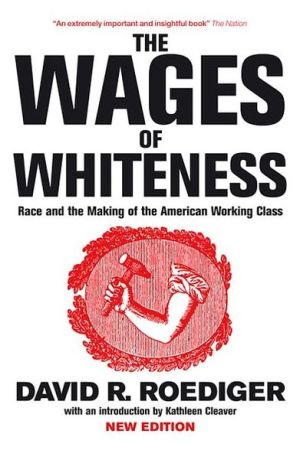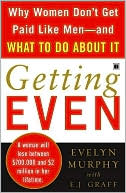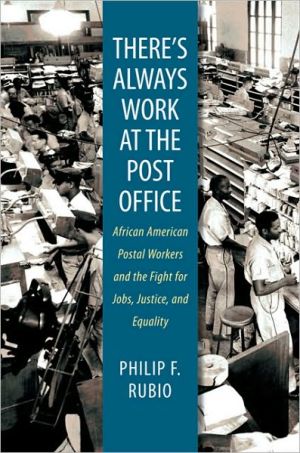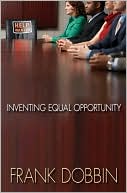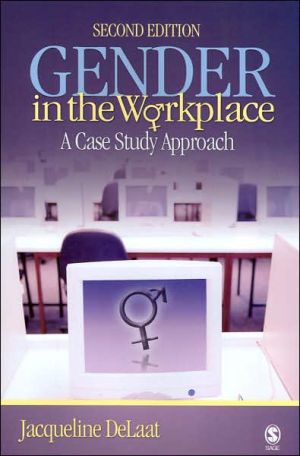Inside Toyland: Working, Shopping, and Social Inequality
"I got my first job working in a toy store when I was 41 years old." So begins sociologist Christine Williams's description of her stint as a low-wage worker at two national toy store chains: one upscale shop and one big box outlet.\ In this provocative, perceptive, and lively book, studded with rich observations from the shop floor, Williams chronicles her experiences as a cashier, salesperson, and stocker and provides broad-ranging, often startling, insights into the social impact of...
Search in google:
"Why do white women shoppers more often refuse to check their bags at the counter than African American or Latina women shoppers do? Why do male shoppers act more annoyed at having to be in the store than their female counterparts? Based on her experiences working in two toy stores, Christine Williams offers a cornucopia of illuminating observations. By focusing on the various ways gender, race and class influence how we shop and sell, she exposes the concept and ideal of consumer citizenship. In this, Williams give us an important idea and an original angle of vision."—Arlie Russell Hochschild, author of The Commercialization of Intimate Life, and editor (with Barbara Ehrenreich) of Global Woman: Nannies, Maids and Sex Workers in the New Economy"In this brilliant book Williams lays bare the social complexities of shopping for toys in America. She describes how shopping and working in toy stores are shaped by race, class and gender, and how children are taught how to consume. This is sociology at its best-laying bare the intricate nature of everyday life, showing us how the world can be different and better, all the while documenting the human drama that swirls around us. This book will change the way you shop, and the way you think about consumerism, inequality and the nature of 21st century American life."—Mary C. Waters, author of Ethnic Options: Choosing Ethnic Identities in America"Williams doesn't just talk about consumption. She goes out and gets herself tough jobs selling toys, and comes back to tell the rest of us what selling and buying for kids are all about. Readers who care little about social scientific treatments of consumption will nevertheless learn from her lively account. Specialists will rapidly adopt her stories, observations, and arguments."—Viviana Zelizer, author of The Purchase of Intimacy"Christine Williams has really gotten inside the big box selling machines of our day to reveal for all of us the strange, perverse logic of work, authority and sales in a retail industry driven by ethnic, gender, and class hierarchies. Read this book and you'll never buy another toy without thinking about the men and women who put it on the shelf!"—Nelson Lichtenstein, editor of Wal-Mart: the Face of 21st Century Capitalism
Inside Toyland\ \ By Christine L. Williams \ The University of California Press\ ISBN: 0-520-24717-5 \ \ \ Chapter One\ HISTORY OF TOY SHOPPING IN AMERICA \ I don't remember ever going to a toy store as a child. Although specialty toy stores existed in major cities like New York and Chicago as early as the 1860s, in the towns and suburbs where I lived no store had the primary purpose of selling toys to kids. I remember hobby stores that sold electric train sets and model-building kits, sporting goods stores where you could buy bikes and baseballs, and department stores and dime stores that had toy departments, but these stores sold merchandise primarily to adults, not to children.\ Something radical happened in the intervening thirty-plus years in the marketing and selling of toys. Giant toy stores now dot the landscape, offering huge selections and low prices on toys made all over the world. This chapter is devoted to understanding this transformation. Toy retailing has undergone three significant changes in its social organization over the past century. First, the size, economic power, and location of stores have changed. Retail stores have become bigger, more powerful than manufacturers, and more spread out over suburban and quasi-rural areas. Second, the labor force inside retail stores has undergone profound rearrangement. Retail work that was previously considered appropriate for white family men has become feminized, racially mixed, part time, and temporary. And third, the toysoffered for sale inside stores have changed. In contrast to a generation ago, virtually every toy brought to market today has television and movie tie-ins. Exploring the history of toy stores can give clues to where the retail industry is headed and how that future course might be altered.\ DEVELOPMENT OF RETAIL GIANTS\ Where we shop has changed dramatically over the last century. Prior to the 1950s, the major centers of retail trade were in cities. Those living in suburban or rural settings relied on small local stores, catalog sales, or dime store chains to purchase goods. From the late 1950s through the 1970s, suburban shopping malls were developed on the outskirts of cities on unincorporated land. These original shopping malls were modeled on community-centered downtowns, albeit stripped of their unruly and unsanitary elements. Lizabeth Cohen (1998, 199) writes that the early mall developers took steps to eliminate not only vagrants and prostitutes but also racial minorities and poor people from the shopping landscape. These original shopping malls declined in the 1980s, when they were replaced by big box stores, so called because they are shaped like warehouses, have no windows, and are fronted by large parking lots. Big box stores teamed up in new developments called "power centers" on undeveloped land located near highways on the edges of suburbs (Ortega 1998, 294). Factory outlet malls are another recent trend in retail development: these large groupings of stores, originally located in rural areas, sell discounted factory-direct name-brand merchandise. This trend may have already peaked. In 1996, there were 329 centers in the United States, but by 2003 their number had dwindled to 230 (Pristin 2004).\ The original movement of retail stores, from urban center to suburban shopping mall, was overdetermined by a number of social and political changes after World War II. Stores followed the general out-migration of the middle class from cities, brought about by mortgage lending practices that favored suburban development. Suburbs were based on a gender division of labor in the family in which women were assigned primary domestic responsibilities (including shopping) and men were expected to be the family breadwinners. Although shopping for the family has always been considered "women's work," the suburban migration cemented that link by geographically segregating consumerism from the "productive" activity of men: Women now shopped in the suburbs where they lived instead of traveling to cities, where men commuted to work every day. "White flight" was also a factor in this suburbanization of the population, as many whites moved to residentially segregated suburban neighborhoods in response to new civil rights laws that mandated the racial integration of schools. The suburbanization of shopping was also made possible by the ubiquitous spread of private automobiles and government-subsidized highways. In her book A Consumers' Republic, Lizabeth Cohen (2003, 266) emphasizes that the first suburban shopping malls were built with the assumption that customers would be white, middle-class women who had cars.\ Another significant cause for the movement of retail out of urban centers was a 1954 change in tax laws. Thomas Hanchett (1996) demonstrates that new "accelerated depreciation" allowances in the 1950s underwrote the original suburban mall developments. This tax policy permitted developers to write off the costs of new business buildings and claim losses against unrelated income. Although it was originally intended to spur the construction of rental housing, investors instead used this tax law to turn the construction of suburban shopping centers into lucrative tax shelters in the late 1950s and 1960s. Basically, the law allowed developers to deduct the full amount of depreciation on their new construction within the first few years of the project's life instead of gradually deducting the replacement value over the expected thirty- to forty-year life span of the structure. This meant that shopping mall owners could deduct a large percentage of their investments in the first years of business, enabling them to earn quick and hefty profits even if the retail stores in the mall were not making money. Importantly, these financial returns could be made only on new construction; renovation of existing businesses was not favored by accelerated depreciation, so downtown shopping centers were unable to reap any benefit from the tax law. Accelerated depreciation led to a suburban retail building frenzy, so that by 1971, according to Hanchett (1996, 1108), there were close to seven shopping centers for every 100,000 Americans (compared to 0.95 centers for every 100,000 in 1956). Paradoxically, the accelerated depreciation allowances were rarely used to maintain the new structures because owners were not obligated to actually use the money to pay for replacement costs as the buildings became dilapidated. Thus, by 1970, entire shopping centers were in decline while construction of new, larger centers continued nearby (Hanchett 1996, 1103).\ Giant retail stores can no longer rely on such lucrative tax shelters to finance new developments. In 1986, Congress revised the depreciation allowance because of worries about severe over building. But stores like Wal-Mart no longer need a mortgage to set up a new outlet; they can buy the land and finance the building construction themselves (Ortega 1998, 294). Yet public financing continues to play a role in underwriting new stores. A number of towns and cities now offer tax breaks for new retail developments, hoping that the sales tax revenues generated by new "power malls" and factory outlet malls will shore up declining revenues received from state and federal governments. Municipalities compete with each other to offer shopping center developers ever-larger tax incentives, which ironically have been shown to offset any advantages that come from increased sales tax revenue. In an even more unfortunate irony, cities and towns that have successfully organized to prevent the building of new suburban retail malls (in order to protect their local downtowns) find that the big box stores can easily subvert these goals by locating right across the city line. This means that the neighboring community will reap whatever tax benefit the new store generates and the downtown merchants located in the protesting town will suffer anyway as many of their customers begin to patronize the giant discounters (Nordquist 2003).\ How did retailers become so big, rich, and powerful? In the first half of the twentieth century, retail stores were relatively powerless compared to the manufacturers. Manufacturers produced the name-brand items that stores wanted to stock and had the power to set prices for their goods. But in the second half of the twentieth century, the relative power of retailers and manufacturers flipped. Today, the retail giants determine what they will offer for sale in their stores and how much they will charge for the merchandise. Their high-volume buying power can make or break a manufacturer. They can and do demand low pricing, and if producers are unable to meet those requirements, the retailers move to another supplier or open their own factories overseas (Frank 1999).\ This change in the relationship between retailers and manufacturers was partly a result of the federal government's deregulation of trade. In 1978, the Federal Trade Commission (FTC) outlawed the practice of manufacturers' setting the price for their goods. Price fixing was never the law of the land (it was contrary to the Sherman Anti-Trust Act guaranteeing free trade), but from the Great Depression through the 1970s several states authorized the practice as a way to ensure "fair trade." Also known as "retail price maintenance," fair trade laws (as they were known by their advocates) gave manufacturers the right to set prices for their goods as an expression of their patent rights and copyrights. This meant that all stores that carried "brand-name" merchandise had to agree to sell it at the same, agreed-upon price. Small retailers were often seen as the beneficiaries of these laws because, unlike large department stores, they could not offer discounts on popular items and afford to stay in business (Bluestone et al. 1981; Hollander 1986 [1954]).\ Large department stores, like Macy's, fought price restrictions, and many stores found ways to subvert the regulations. Macy's department store began in the nineteenth century as a discounter promising the lowest prices on popular goods (Hower 1943). It undercut competitors all the time, which it could do because of its "cash down" policy (that is, no credit was offered). After 1900, Macy's came under increasing attack for its price cutting, seen at the time as an unethical business practice. Between 1900 and 1914, Macy's was involved in a number of lawsuits by manufacturers charging that the store violated their patent rights by selling their goods at a lower-than-agreed-upon price. Although Macy's won most of these battles (including one that made it to the Supreme Court in 1913), fair trade legislation passed in subsequent decades restricted its ability to offer discounts on popular brands.\ It is hard to imagine from our vantage point today, but for most of the twentieth century, the very idea of discounting was considered unseemly. An economist writing at midcentury noted that many business professors and textbook writers of the time did not discuss discounting because it was considered in some trade circles to be "unethical" and not quite "respectable" (Hollander 1986 [1954], 14). Newspapers often refused to accept advertisements from discount stores (Brecher 1949a). Even consumers were wary of the practice. A 1949 article in Consumer Reports entitled "Buying at a Discount: Is It against the Law?" (Brecher 1949a) summed up the concern. The article emphasized that consumers needn't worry about buying goods at discount. The enforcement of fair trade laws was a private matter between manufacturers and retailers and as such had unpredictable results even for defendants in civil court cases. Consumers could never face criminal charges of discount shopping. Nevertheless, Consumer Reports stopped short of fully endorsing discount shopping, sending a very mixed message to consumers. Earlier in the same year, the organization sent undercover shoppers to investigate discount stores in cities around the country. This research found over one hundred "admitted" discount houses in New York City, twelve in Chicago, eight in Los Angeles, five in Seattle, and two in Baltimore. The magazine concluded that "buying at a discount is a widespread practice" but refused to disclose the names of the discount stores in order to protect them from potential damage suits. To consumers interested in bargain shopping, it offered the following advice on "how to find a discount house": "If you want to find a discount house in your own city, don't write to CU [Consumer Union, publisher of Consumer Reports]. Instead, ask your friends and acquaintances, the man in your company who does the company's purchasing, people you know who are in the retail business, or others in a position to know. By all odds the most effective way to find a discount house is to ask other people" (Brecher 1949b, 375). Not surprisingly, the general impression of consumers was that buying goods at discounts was something done under the table; it was certainly not an aspect of shopping to brag about.\ That all changed when the FTC ended retail price fixing in 1978, a time when economic liberalization was sweeping through government. Not only retail but also the airline industry was deregulated. (Prior to the 1970s the government had approved airline routes and fares.) The FTC deregulation of retail meant that products could have a "suggested retail price" from the manufacturer but not a mandatory price.\ The impact on manufacturer-retail relationships was immediate and profound. Prior to deregulation, most retail stores controlled the merchandising and display of commodities but not their design or manufacture. The two were part of a team, with retailers reliant on trademarked brands advertised by manufacturers to lure customers into their stores and manufacturers reliant on retailers to sell their goods at a minimum price to maintain their profits. But once the FTC undercut the manufacturer's retail price, the manufacturer and retailer became competing companies. In his history of the Gap stores, Louis Nevaer (2001) points out that after 1978 the manufacturer and retailer were no longer allowed to cooperate with each other on price fixing because that would now be defined as collusion, an illegal business practice.\ This story of deregulation is important for understanding the rise of large discount toy chains in the 1970s and 1980s. The demise of manufacturer price fixing inspired increased competition among retailers to offer discounted goods. Stores were forced to cut their profit margins on the sale of name-brand goods and increase their size in the hope that a high volume of trade would keep them afloat. Giant toy stores like the Toy Warehouse where I worked are called "category killers" by marketing experts. This term is used when the discounter strategy is applied to one category of merchandise, like food, pet care, or toys. The discounter strategy is "developing large sites and maximizing efficiency, building high volume with low prices, and then negotiating appropriate discounts from manufacturers, investing in technology and reducing logistics costs" (Corstjens and Corstjens 1995, 101). The goal of the category killers is to control the entire market for the goods they sell. If successful, they can demand concessions from manufacturers, who must give giant stores incentives to place their products on the shelves.\ The "golden age" of the category killer was the 1990s (Corstjens and Corstjens 1995, 103). Since then, the category killers have come under siege by giant discounters like Wal-Mart and Target, which can offer even lower prices because they can sell more merchandise due to their higher volume of trade. The Toy Warehouse is now struggling to keep up with Wal-Mart, now the largest toy retailer, indeed the largest private employer, in the country (Michman and Mazze 2001).\ Under these circumstances of competitive discount pricing, according to Nevaer, the only way for retailers to ensure profitability is to manufacture their own brands. Profits still can be made at the manufacturing stage by sending production overseas to factories employing workers at extremely low wages. The Gap was the first store to pursue this strategy of "vertical integration," an approach that was quickly replicated by other retailers. When the Gap first opened in 1969, 90 percent of the clothes it sold were manufactured by Levi's in factories located throughout the United States. At that time, Levi's controlled the price of its clothing, so the price charged by the Gap was pretty much the same as that of any other place. After deregulation, the percentage of Levi's sold in Gap stores steadily declined, and Levi's were replaced by Gap jeans. By 1991, all of the clothes sold in the Gap were manufactured by the Gap in overseas factories.\ Giant toy stores are not vertically integrated in this way, since they do not make their own toys, but they do make deals with manufacturers to produce store "exclusives"-that is, toys specially made for sale only in their stores. Thus Mattel makes a special Barbie doll available only at the Toy Warehouse and another available only at Diamond Toys. But stores are not allowed to control the distribution of manufacturers' products. In 1997, the FTC won its case against the toy store giant Toys "R" Us, which was charged with illegally pressuring toy makers into not selling popular toys to warehouse clubs, a ruling that the store immediately appealed (Miller 1998). Any collusion between stores and manufacturers is dubious from a legal perspective unless the store owns-or directly subcontracts from-the manufacturer.\ (Continues...)\ \ \ \ \ Excerpted from Inside Toyland by Christine L. Williams Excerpted by permission.\ All rights reserved. No part of this excerpt may be reproduced or reprinted without permission in writing from the publisher.\ Excerpts are provided by Dial-A-Book Inc. solely for the personal use of visitors to this web site. \ \
1A sociologist inside toy stores12History of toy shopping in America233The social organization of toy stores484Inequality on the shopping floor925Kids in toyland1376Toys and citizenship185
